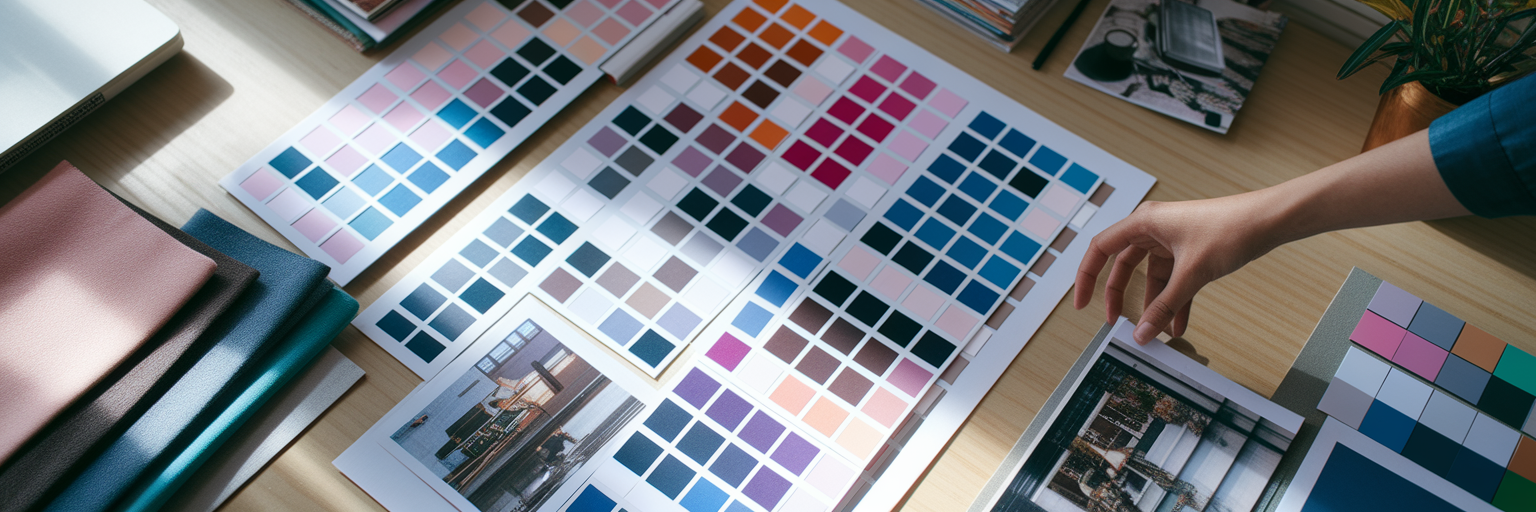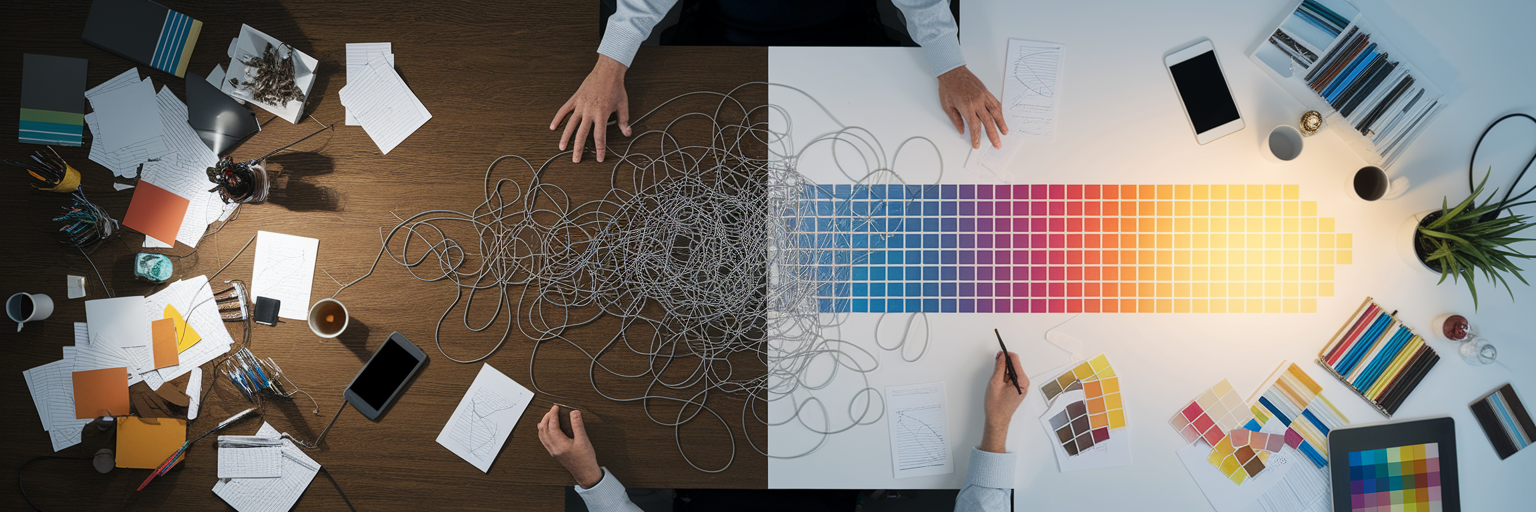The Creative Chaos of Unorganized Inspiration
Picture this: a deadline is closing in. You dive into your "Inspiration" folder, hoping for a spark, but instead find a digital graveyard of unsorted screenshots, broken links, and random images. We have all been there. This chaos turns a valuable resource into a source of stress, creating cognitive overload right when you need clarity the most.
While designers thrive on a constant flow of ideas, a disorganized collection process can be counterproductive. The key is to understand that a structured system is not a cage for creativity but a launchpad. When you organize design inspiration effectively, you free up mental space for actual innovation. Tools built for creatives can help establish this system, turning chaos into a well-oiled machine. Here are 10 practical methods to find that perfect balance.
Build Your Digital Inspiration Library

The foundation of sustained creativity is a functional, accessible library. It is not about hoarding images but about curating a collection that works for you. Here are three foundational strategies to get started.
- Master Visual Bookmarking: This goes far beyond just saving images. It is about creating thematic boards for specific projects, styles like 'Minimalist UI' or 'Art Deco Posters', or even granular elements like 'Typography' and 'Color Palettes'. The best visual bookmarking tools for designers, like Bookmarkify, centralize inspiration from across the web into one curated, beautiful space. You can see how we do it on our own curated inspiration page.
- Develop a Smart Tagging System: Think of tagging as a more flexible alternative to rigid folders. A smart tagging system turns your library into a searchable database. Create a consistent convention with tags like a project name (
#project-x), a specific style (#brutalism), or a design element (#button-styles). As a study mentioned in Psychology Today suggests, structured approaches can reduce cognitive load, leaving more mental energy for innovation.
- Create Dynamic Moodboards: Learning how to create a moodboard that works is about building a living document, not a static collage. A dynamic moodboard defines a project's visual direction, tone, and emotional feel. Digital moodboards are especially powerful for team collaboration, allowing for quick iteration and ensuring everyone is aligned on the creative vision from the start.
Comparing Inspiration Organization Methods
| Method | Primary Goal | Best For | Key Benefit |
| Visual Bookmarking | Collecting and categorizing visual assets | Gathering a wide range of ideas from the web | Centralized, easy-to-browse library |
| Smart Tagging | Creating a searchable, cross-referenced database | Finding specific elements across multiple projects | Flexibility and powerful filtering |
| Dynamic Moodboards | Defining a project's specific visual direction | Aligning teams and clients on a creative vision | Strategic focus and collaborative iteration |
Weave Organization into Your Workflow
A great system is only effective if you use it. Integrating organization into your daily habits is essential for long term success. These design workflow tips help make creative inspiration management feel effortless rather than like another chore.
- Use a 'Quick Capture' Inbox: Inspiration strikes at the most random times. To avoid breaking your creative flow, set up a single, frictionless place to dump raw ideas. This could be a dedicated 'Inbox' board in Bookmarkify or even a simple notes app. The goal is to capture first and organize later, ensuring no brilliant idea gets lost.
- Schedule Regular Curation Sessions: An inspiration library is like a garden; it needs regular tending. Block out 30 minutes each week to process your 'Inbox.' This simple routine of tagging, moving, and deleting items prevents digital clutter from building up and keeps your library relevant and inspiring.
- Document Your Own Work: Do not forget that your past projects are one of your most valuable sources of inspiration. Create a private library of your completed work, adding notes on the process, challenges you overcame, and key learnings. This builds a personal reference guide you can turn to for future projects. For more ideas on improving your daily process, check out our daily workflow tips.
Think Beyond the Visual

True creativity is multi-sensory. While designers are visual by nature, limiting your inspiration to just images can narrow your perspective. A more holistic approach can lead to more distinctive and meaningful work.
- Collect Non-Visual Inspiration: Great design is often inspired by things outside of design. Create collections for compelling copywriting, insightful quotes, articles that spark an idea, or even sound clips that evoke a specific mood. A versatile tool that accepts different media types is essential for this. As Forbes highlights, a well-rounded collection of inspiration helps maintain a cohesive creative vision across a project.
- Create an 'Anti-Inspiration' Board: This might sound counterintuitive, but knowing what not to do is just as important as knowing what to do. Create a board for design trends you want to avoid, industry clichés that feel tired, or styles that clash with a brand's identity. This practice sharpens a project's focus and helps ensure your final output is unique. For more articles on design thinking, you can explore the Bookmarkify blog.
Keep Your Creative Engine Running
Once your library is organized, it becomes an active tool for creation, not just a passive archive. Use it to fuel your work and collaborate more effectively with others.
- Revisit and Remix Old Ideas: An organized library makes it easy to rediscover forgotten gems. Periodically browse your archives to see what sparks a new connection. You might find that a typographic treatment you saved years ago is the perfect solution for a current project, or an old color palette can be remixed into something fresh.
- Share and Collaborate on Inspiration: Inspiration is a team sport. Use collaborative boards to gather ideas with teammates or align with clients before a single pixel is pushed. Platforms designed for this purpose streamline the feedback process, ensuring everyone shares the same creative vision from day one. A clear process is key, and you can see how our tools support this on our dedicated design page.
From Inspiration Chaos to Creative Clarity
Ultimately, organization is not the enemy of creativity. It is the framework that supports and sustains it. A thoughtful system for creative inspiration management removes friction, reduces stress, and frees your mind to do what it does best: innovate. A well managed library saves you time, sharpens your vision, and leads to stronger, more confident design work.
Ready to transform your creative process and leave the chaos behind? Try Bookmarkify for free and start building your inspiration library today.












